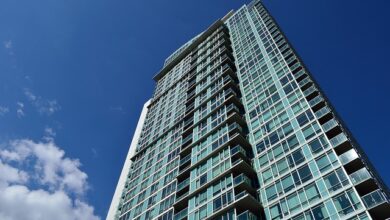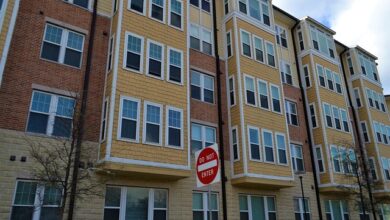How to Get Homeowners Insurance for a Flat in the UK

Owning a flat (apartment) in the UK is an exciting milestone, whether it’s your primary residence, a buy-to-let investment, or even a second home. However, protecting your property with the right insurance coverage is crucial to safeguarding your investment and ensuring peace of mind. In this article, we will guide you step-by-step on how to get homeowners insurance for a flat in the UK, covering everything from understanding the types of policies available to finding the best deals.
1. Understanding What Homeowners Insurance Covers
Before diving into the process of purchasing insurance, it’s essential to understand what homeowners insurance typically covers when you own a flat:
a. Buildings Insurance
If you own a leasehold flat, buildings insurance is usually managed by the freeholder or the residents’ management company. This type of insurance covers structural damage to the building itself, such as walls, roof, and foundations. It also includes damages caused by natural disasters like floods, fires, storms, or burst pipes.
However, if you are responsible for insuring your flat (e.g., you’re a freeholder), you’ll need to arrange buildings insurance yourself.
b. Contents Insurance
Contents insurance protects the personal belongings inside your flat, including furniture, electronics, clothing, jewelry, and other valuables. This policy covers losses due to theft, fire, water damage, or accidental damage.
c. Additional Coverage Options
Depending on your needs, you can opt for additional coverage options:
- Accidental Damage: Extends protection to everyday mishaps like spilling drinks on carpets or breaking appliances.
- Legal Expenses: Covers legal fees if you need to take action against someone who causes damage to your property.
- Alternative Accommodation: Provides financial support if your flat becomes uninhabitable due to an insured event.
2. Steps to Get Homeowners Insurance for Your Flat
Step 1: Assess Your Needs
Start by evaluating your specific requirements:
- Determine the rebuild cost of your flat (for buildings insurance).
- Make a detailed inventory of your possessions to estimate their total value (for contents insurance).
- Consider any unique features of your flat that might require specialized coverage, such as high-value art or antiques.
Step 2: Compare Quotes
The UK insurance market offers numerous providers, so comparing quotes is vital to find the best deal. Use comparison websites like Comparethemarket , MoneySuperMarket , or GoCompare to explore different policies. When comparing, consider:
- The level of coverage offered.
- Excess charges (the amount you pay before the insurer covers costs).
- Customer reviews and ratings.
- Any discounts available, such as multi-policy discounts (e.g., bundling car and home insurance).
Step 3: Choose the Right Policy
Once you’ve compared quotes, select a policy that aligns with your budget and priorities. Ensure the policy covers all potential risks, especially those relevant to flats, such as:
- Shared responsibility clauses if multiple owners share communal areas.
- Liability protection if someone gets injured in your flat.
Step 4: Disclose All Relevant Information
When applying for insurance, honesty is key. Failing to disclose important details—such as previous claims, pets, or modifications to your flat—could invalidate your policy. Provide accurate information about:
- The age and condition of your flat.
- Security measures in place, like alarms or locks.
- Any existing claims history.
Step 5: Review and Renew Regularly
Don’t forget to review your policy annually to ensure it still meets your needs. As your circumstances change (e.g., buying new furniture or upgrading security systems), update your coverage accordingly. Additionally, shop around during renewal periods to avoid paying more than necessary.
3. Tips for Saving Money on Homeowners Insurance
Getting comprehensive coverage doesn’t have to break the bank. Here are some tips to help you save money while maintaining adequate protection:
a. Increase Your Excess
Voluntarily increasing your excess can lower your premium. Just make sure you can afford the higher excess if you ever need to make a claim.
b. Improve Security
Installing approved security devices, such as burglar alarms, door chains, or window locks, can reduce your premium. Many insurers offer discounts for enhanced security measures.
c. Bundle Policies
Consider bundling your home insurance with other policies, such as car or life insurance, to benefit from package discounts.
d. Pay Annually
Paying your premium upfront rather than monthly can often result in significant savings.
e. Stay Loyal but Not Blindly
While loyalty discounts exist, don’t hesitate to switch providers if another company offers better value. Always compare prices at renewal time.
4. Common Questions About Homeowners Insurance for Flats
Q: Do I need both buildings and contents insurance?
If you’re a leaseholder, the freeholder typically handles buildings insurance. However, you must arrange contents insurance yourself unless otherwise stated in your lease agreement.
Q: What happens if my flat is part of a block?
In blocks of flats, communal areas are usually covered under a separate insurance policy arranged by the freeholder or managing agent. Check your lease terms to clarify responsibilities.
Q: Is flood insurance included?
Flood insurance may be included in standard policies, but it depends on the provider and location of your flat. If you live in a flood-prone area, ensure your policy explicitly covers flooding.
Q: Can I cancel my policy early?
Most policies allow cancellation, though you may face penalties or lose out on no-claims bonuses. Always read the small print before signing up.




